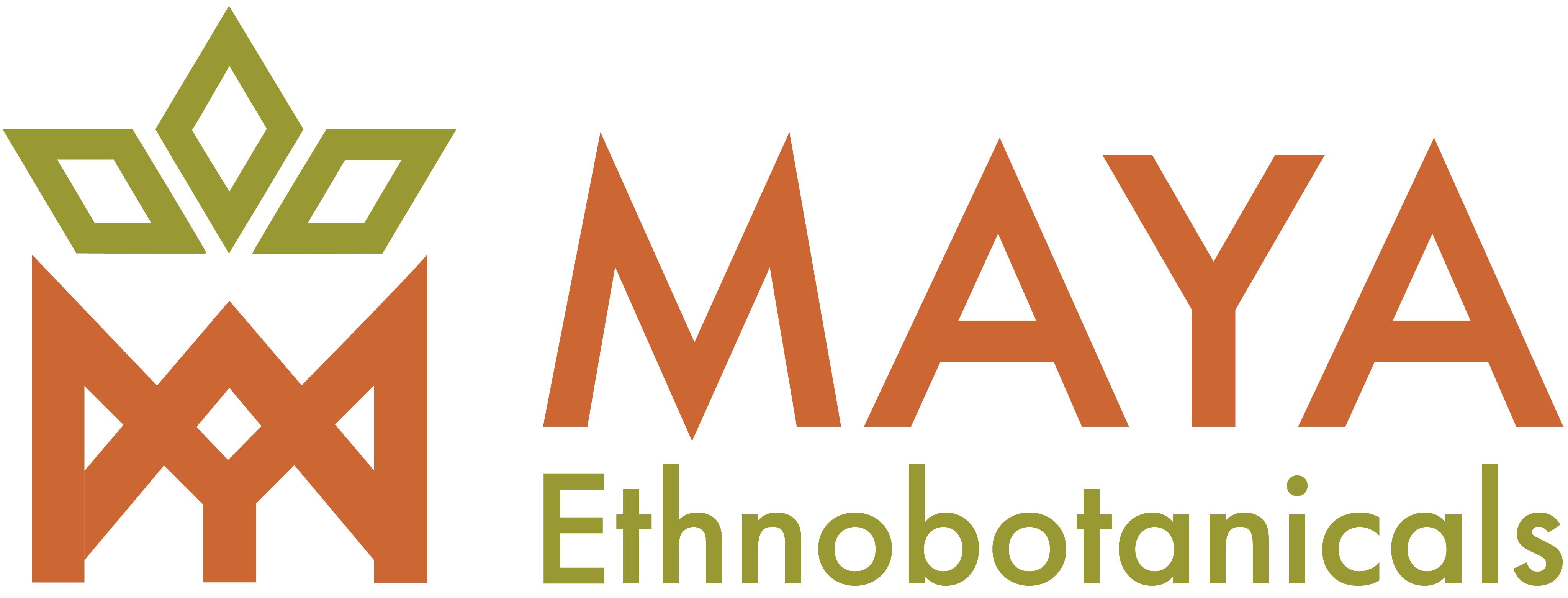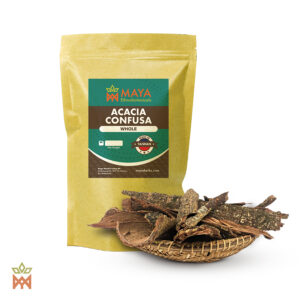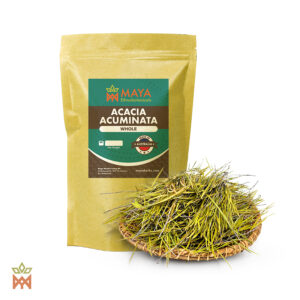Showing all 2 results
- Select options This product has multiple variants. The options may be chosen on the product page
Price range: € 8,50 through € 112,00 Incl. VAT
Price range: € 6,80 through € 89,60 Incl. VAT - Price range: € 9,40 through € 121,00 Incl. VATSelect options This product has multiple variants. The options may be chosen on the product page
Showing all 2 results
What Are Acacia Trees?
Many of these aggressively growing plants develop massive, twisted, and/or multifurcating trunks with crooked, chaotic, thorny branches, which stand in stark contrast to their gentle, puffy white or golden-colored starburst flowers and geometrically pleasing lines of bipinnate leaves.
Most Acacia species (about 957-975) are found in Australia, where they are endearingly referred to as ‘wattles.’ This moniker draws its origin from the early settlers’ practice of using stacked or woven (watul in archaic English) Acacia tree branches to construct frameworks for their mud huts.
Other names for Acacias include Thorntrees (for the spine-bearing species) and Mimosas. The latter is actually misleading because it’s a designation for a separate genus of the Leguminosae family, whose species share many botanical features with Acacias. The most well-known example of this overlap is Mimosa hostilis, which was initially identified as Acacia tenuiflora .
Along with the Acacias endemic to Australia, a few other species can be found in South and Southeast Asia, Taiwan, Hawaii, Réunion Island, some Pacific Islands, and the Near East. As was the case with many Mimosa species, Acacias native to South Africa and the Americas were discovered to mostly belong to a different genetic lineage, prompting decades of botanical debate, which finally resulted in the fragmentation of the Acacia genus into five subgroups.
That’s how about 400 plants previously recognized as Acacias were reclassified in 2005 into two new genera: Vachellia and Senegalia. Two more smaller genera — Acaciella and Mariosousa — were added to account for the few dozen more divergent species native to the Mexican Pacific coast. The remaining species (mostly the Australasian ones) kept their original botanical designations.
What Makes Acacias Awesome?
No matter what kind of environment they find themselves in, Acacia trees can adapt to it. Thus, in certain climates, they are evergreen, while in others, they shed their leaves. The natural resilience of Acacia trees allows them to thrive even in the most arid conditions, where little other life can survive. The most famous solitary tree ever discovered, the Tree of Ténéré, was an Acacia which mysteriously lived for 300 years in the middle of Niger’s Sahara desert, 250 miles away from any other tree.
In fact, some Australian Acacias that were introduced to the Americas and South Africa have made themselves so comfortable in the new environments that they started taking over local grasslands and agricultural areas. Being next to impossible to exterminate, they are now considered invasive species in these lands; some, like Acacia mearnsii, have even made it to the top 100 list of invasive species worldwide.
Another testament to the indestructibility of Acacias is that some of them legitimately grow out of fire. For example, the germination of Acacia obtusifolia is successfully triggered by exposing their seeds to high heat, and it is typically among the pioneer species of flora seen emerging after bushfires in Australia.
Many Acacia trees grow spines to defend themselves from grazing animals such as camels, giraffes, and kangaroos. Actually, the name Acacia is derived from the ancient Greek word ακις (akis), which means thorn. It was given to the species A. nilotica by botanist, physician, and pharmacologist Pedanius Dioscorides some 2,000 years ago.
Some Central American species, collectively known as Bullhorn Acacias, are known to develop exquisitely hard, thick, and stubby thorns, which serve to house certain types of ants. The ants feed on the sap secretion of the petioles (leaf stalks) of the plant; in return, they fight off herbivores and even destroy competing flora around the tree.
Spines are not the only weapon Acacias brandish to protect their precious leaves. All species produce tannins, which can be highly toxic and even deadly if consumed in sufficient quantities. Moreover, the trees are capable of sensing when their leaves are being eaten, at which point they emit ethylene into the air. Traveling on the breeze to nearby Acacias, this chemical signals them to also ramp up tannin production.
In particularly sunny conditions, the leaves of some Acacias become reduced or vanish altogether. Assuming the role of leaves, the leaf stalks expand and flatten, developing into photosynthesis-capable phyllodes, which then angle themselves toward the sun so as to moderate the amount of direct exposure to light.
Aside from the tannin production, something else all Acacias have in common is that they bear elongated leguminous fruits. The seed pods of these legumes, like the seeds themselves, as well as the flowers and young leaves of some trees, are edible and have long been used as a food source for both humans and livestock, as well as a coffee analogue by the Australian Aboriginal, Southeast Asian, and Mesoamerican peoples.
Acacia Use Through History
Throughout the ages, many cultures have recognized Acacias as unique plants with a vast range of powerful and useful properties.
In ancient Egyptian mythology, the Acacia tree, referred to as shont, shonnet, shondj, or shondet, was considered sacred to the Goddess Isis and associated with the Tree of Life as well as with the two lions guarding the passage to the Otherworld. Parts of the tree were also believed to have been used by the spirits of the deceased for healing and protection from evil in that realm.
Acacia appears in numerous myths chronicling the stories of the Goddess Isis and her family. Isis and her sister, Nephthys, were known as the Two Shonti (Acacia) Goddesses. Horus, son of Isis, is said in the Pyramid Texts to have “come forth from the Acacia tree,” and Osiris, Isis’ husband, is described as “the Solitary One in the Acacia” because, after his death, when his sarcophagus had washed up on the shores of Byblos, he was found enveloped by a magical growth of an Acacia tree.
Aside from its profound role in mythology, the local species, Acacia nilotica, found numerous applications in ancient Egyptian medicine and manufacture. Its flowers were used for healing skin conditions, its leaves to resolve cough and treat wounds and inflammations, its seedpods to feed cattle, its gum as a contraceptive, its tannin-rich bark to heal burns and dye leather, and its sturdy timber as a hardwood for building boats, sarcophagi, and furniture.
The spiritual significance of Acacia might also have been recognized in the Bible — it’s been speculated that an Acacia species endemic to the Sinai desert could have been the “burning bush” that spoke to Moses as God. If a decent-sized DMT-containing plant were indeed on fire and the person next to it happened to inhale its smoke, there are chances that this could induce an altered state of consciousness and the experience of divine communication.
It’s also believed that Acacia seyal was the source of shittim wood, which, according to the Book of Exodus, was used to build the most sacred religious relic of the Israelites, the Ark of the Covenant.
In Freemasonry, Acacias symbolize purity and spiritual endurance in life, as well as resurrection and immortality in funerary contexts. According to a Masonic legend, Hiram Abiff, the chief architect of King Solomon's Temple, was murdered by his craftsmen after refusing to divulge the secrets of master masons. The attackers killed him and buried him in a grave which they marked with a sprig of Acacia.
Over in India, Nepal, Tibet, and China, Acacia tree bark, root, and resin have been used to craft incense since ancient times. Smoke from Acacia tree bark is believed to appease the gods and keep demons and spirits away, whereas Acacia root and resin are combined with other herbs and ingredients to produce various incense types.
In Ayurvedic medicine, Acacia nilotica is used to treat premature ejaculation, and Acacia (Senegalia) catechu is used as a skin cleanser and inflammation reliever. An extract of the latter is called Catechu and is also a tanning and dyeing agent for wool, silk, cotton, and leather, as well as an important ingredient in South Asian betel nut (paan) mixtures.
Australian indigenous peoples also used Acacia trees for their recreational properties. The ash obtained from burning one of several Acacia species is known to have been consumed with pituri, chewing tobacco made from Duboisia hopwoodii or a local species of Nicotiana, for its stimulating or calming (depending on composition and usage) effects.
Unfortunately, the rituals of initiated Aboriginals were always kept in strict secrecy, so no records exist to back up the conjecture that smoking Acacias was practiced by this culture. If the Aboriginals did use Acacias occasion mystical experiences, it’s plausible that the colonial settlers developed an interest in these plants by learning of their use from the locals.
Either way, the golden wattle (Acacia pycnantha Benth.) has served as the official symbol of Australia since 1838. The plant is prominently featured in the country’s coat of arms and is celebrated nationally every Sept 1 to mark the start of spring. Whether the government was aware of the potent psychedelic properties of wattle trees at the time of choosing one to represent their nation remains untold.
Today, aside from serving as a source of entheogens for a generation of psychonauts, various parts of numerous Acacia tree species continue to be used for a wide range of purposes:
- Acacia seeds and seed pods are eaten in Mexico, and the shoots are a common ingredient in Burmese, Lao, and Thai cuisines
- The aromatic extracts of Acacia plants are added to many Western beverages and candies, as well as to perfumes
- The gum of Acacia trees is used as a dietary supplement, medicine, emulsifier, thickener, coating, and glue for many things (including the sticky bit of rolling papers)
- Acacia tannins serve as ingredients in paints and dyes
- Acacia wood is used in carpentry and as firewood
- Acacia trees themselves are grown for ornamental purposes or to reclaim land after erosion damage.
If an Acacia tea is consumed, the ratio of the tryptamines and phenethylamines in the tree will determine the brew’s specific effect profile. This means that experiences with different sufficiently psychoactive wattle species will not be the same.
Drinking different Acacia teas is an excellent way to connect with the spirit of this sacred plant. However, this approach is typically taken only by committed plant medicine practitioners, whereas most recreational psychonauts prefer to extract DMT from a select few wattle species with high and reliable tryptamine concentrations. These include: A. confusa, A. acuminata, A. obtusifolia, A. maidenii, and A. floribunda.
Acacia Benefits
Due to the extensive and longstanding use of Acacias for a range of therapeutic purposes throughout the world, many of these powerful plant species have received scientific corroboration of their effectiveness against: microbes, fungi, parasites, viruses, malaria, filaria, certain types of cancer, cell oxidation, hypertension, fever, diabetes, dry/damaged skin, clogged pores, and muscle spasms, as well as of their immunomodulatory and abortifacient properties.
This table from a recent research review summarizes the available scientific literature that confirms most of the noted therapeutic properties reported for dozens of Acacia species.
Acacia Legality
In most Western countries, the plant matter itself remains legal to purchase and possess throughout much of the world, with a few exceptions including: Canada, Denmark, Finland, France, Greece, Iceland, Lithuania, Poland, Switzerland, and the UK.
Where to Buy Acacia Legally?
Here at Maya Ethnobotanicals, we offer a range of traditional medicinal plants which have been used by indigenous peoples for a variety of purposes since ancient times.
Our products are organically grown, sustainably harvested, and sourced through fair trade, and we sell them with the intention to promote ethnobotanical enthusiasm throughout the world.
We do not advocate for the use of any of our products in illegal ways, nor do we ship any of our botanical samples to countries where they are illegal. We advise our customers to inform themselves thoroughly about their local regulations before placing an order.
If you’re looking for Acacia Acuminata Phyllodes or Acacia Confusa Root Bark for sale, you can purchase them in our webshop:



